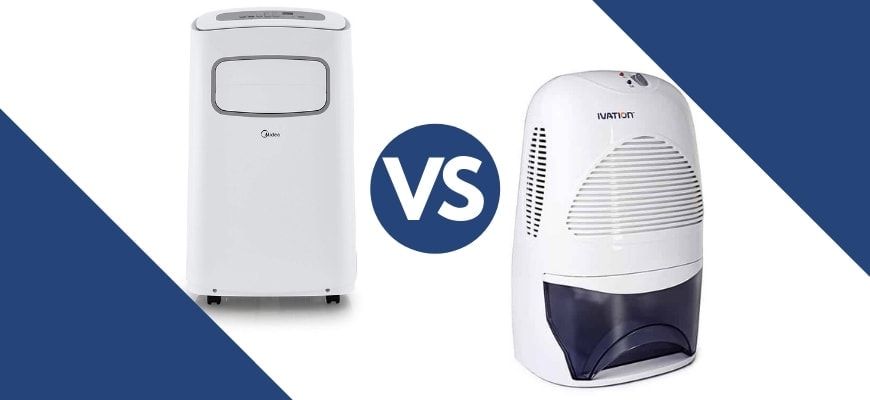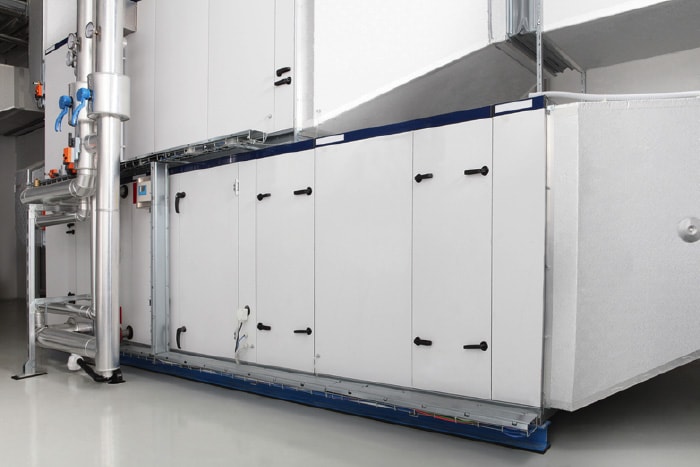Some industrial work environments handle water-based substances daily. Examples of such fields include interior grow rooms, food-processing factories, and fresh-water facilities that contain high levels of humidity.
Fortunately, industrial dehumidifiers help lower moisture levels in the air, preventing problems leading to reduced equipment lifespans, increased maintenance, mold formation, and rust.

What Are Industrial Dehumidifiers?
Massive workspaces and factories are prone to high humidity levels, especially in climates with lots of moisture in the air. Some workplaces are actively involved with water-based substances of some kind that further increase the humidity. Industrial dehumidifiers help reduce the moisture on a large scale, being more useful for these locations than their commercial and residential counterparts.
These industrial units generally consist of heavy-duty plastic or steel, making them more durable than lightweight residential dehumidifiers. Of course, this material and usage make it more expensive, but it’s well worth the cost if you have excess moisture in a vast building.
How Does an Industrial Dehumidifier Work?
While various dehumidifier types function differently, the primary internal processes remain the same. The intake draws in the surrounding air before either condensing, absorbing, or heating it to remove the moisture. What remains is warm air that exits, which you can also use to dry water-damaged areas or any other wet objects.
As the name implies, it’s mostly used in industrial environments that feature ample spaces. You’re looking at factories and facilities that use water daily, which just fuels the humidity in the air. Corporations usually operate the dehumidifiers to bring moisture levels down from above 60% to below 50%.

How to Size an Industrial Dehumidifier
Manufacturers size dehumidifiers by how many pints of moisture they can remove per day. You’ll generally find that it ranges between 100 and 2,500 pints per day (PPD). The larger the space and the more moisture in the air, the bigger the machine will have to be.
Overall, here’s how to determine what size dehumidifier you need:
- Space’s total area in square feet, or volume in cubic feet;
- The room temperature;
- Current humidity level;
- Desired humidity level;
- PPD or cubic feet per minute (CFM) needed.

Types of Industrial Dehumidifiers
Unlike residential variations, industrial dehumidifiers have a more extensive array of types. Let’s take a look at them now.
Electric Refrigerant
Like your fridge, these dehumidifiers draw the air over condensers that cool the moisture into water droplets, collected in a tray for further drainage. Some of these also have filters to purify the liquid for reuse. The machine then returns dry, warm air into the environment.
Spray
Spray units also cool the air until it reaches beneath atmospheric dewpoint temperature. It creates a mixture of chilled air and water that removes the moisture from the air. Air Washers perform the same function, but they further clean the air by removing contaminants and pollutants.
Ionic Membrane
As the name implies, the dehumidifier contains an ionic membrane that captures moisture in a sealed enclosure. The material is a solid polymer electrolyte (SPE) and works at a molecular level. Factories love using these units in spaces that are hard to maintain.
Desiccant
Hydrophilic materials, like silica gel, are the primary ingredients for this dehumidifier. It serves as a chemical absorbent, trapping moisture in pockets while releasing dry air. The gel wheel is then heated to evaporate the moisture, which is emitted as steam.
Industrial Dehumidifier vs Air Conditioner – Comparison Overview
Are you wondering whether you should invest in an industrial dehumidifier or an air conditioner? Let’s look at the significant differences so you can assess which works better for you.

Humidity and Temperature
While both are exceptional at lowering humidity, dehumidifiers take the gold medal for efficiency and effectiveness. Air conditioners also reduce moisture in the air, but they also change the temperature simultaneously. Dehumidifiers only remove humidity without causing the area to cool down.
Power Consumption
Air conditioners are the most extensive culprits when it comes to significant power consumption. While you do find ACs with energy-saving capacity, they don’t come close to dehumidifier electrical usage. You’ll save monthly on your utility bill.
Mold and Mildew
High moisture levels are the root cause of mold and mildew formation. Due to how effective dehumidifiers are in reducing humidity levels, they stand a better chance of preventing and removing these growths.
Internal vs External
Air conditioners are usually permanently fixed to factory walls on the inside and outside. Dehumidifiers are only located on the inside, while there are some portable units that you can move around between rooms.

Conclusion
Industrial dehumidifiers are ideal for massive buildings where machines and employees work with water-based substances. There are specific types for different environments and occasions, so ensure that you study each one to assess which one will fit your business needs.
People Also Ask
We’re sure you have any questions after reading our article. Here’s a quick look at the FAQs for industrial dehumidifiers.
Industrial dehumidifiers are expensive, especially if you buy ones with a massive capacity. You’re looking at between $5,000 and $6,000. As a quick comparison, residential and commercial units sell for about $1,000 to $3,000.
There are different factors at play when deciding where to place it. Firstly, you’ll need it in a space with the highest humidity and the lower temperature. You also need a central location where the airflow isn’t blocked.
Dehumidifiers have internal humidistats that measure the moisture levels in the air. These devices also stop and start the machine based on the level you set it at, ensuring that it maintains the room at the desired humidity.
It depends on the model that you buy. It ranges between 100 and 2,500 pints per day, so you’ll need to look at the product specifications to ensure that it meets your requirements for the space you want to dehumidify.
If you buy standard dehumidifiers, you’re looking at about 280 W. Large units can consume about 500 W/h, while you might even find ones that reach up to 1,500 W. Ensure that you find one where it’s easy to foot the bill.
If you’re looking at the 280 W units, using a rate of 15 cents per kW will cost you about 4.2 cents per hour. The 500 W dehumidifiers will cost you 7.5, and the 1,500 W ones about 22.5 cents per hour.
